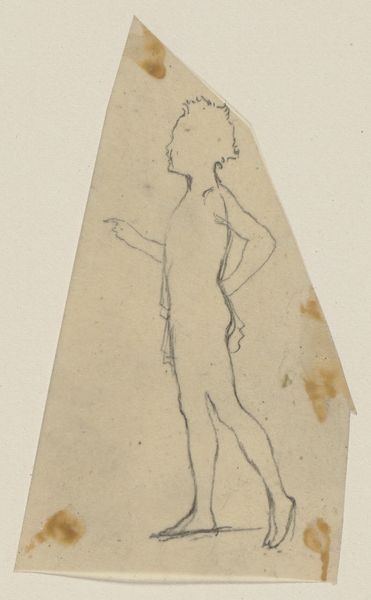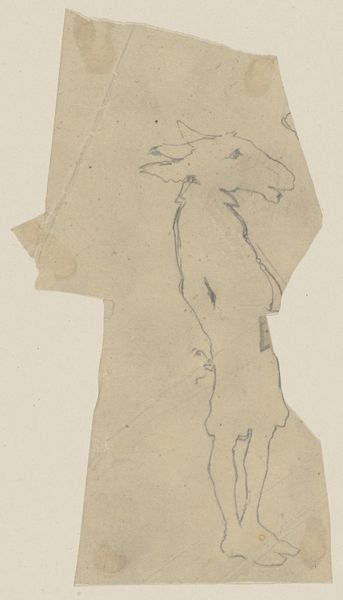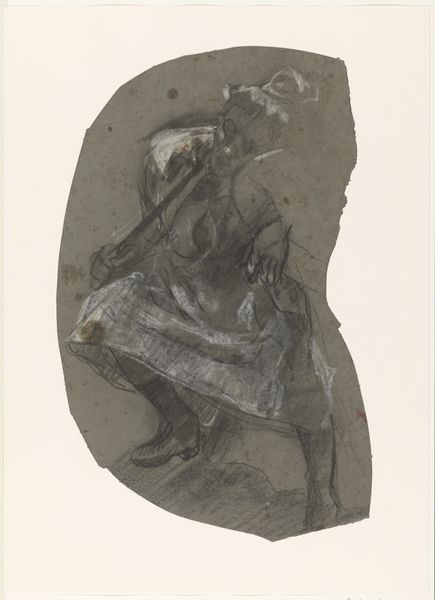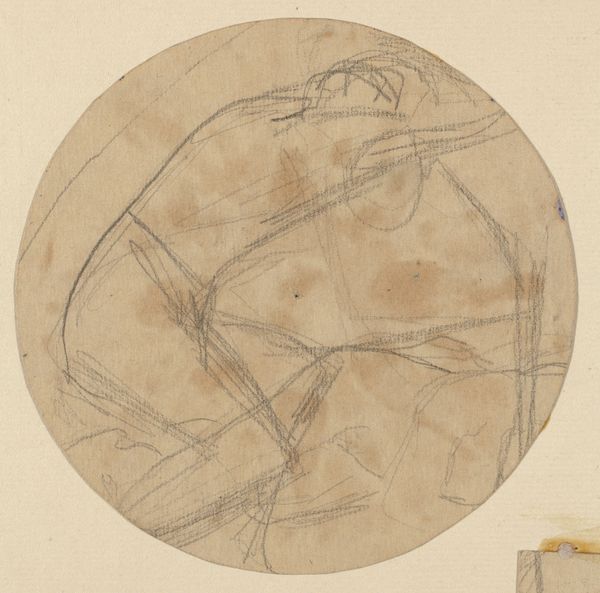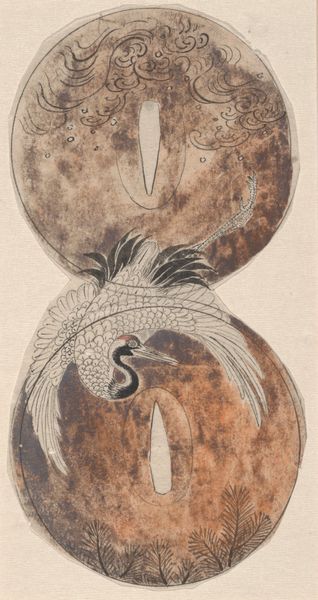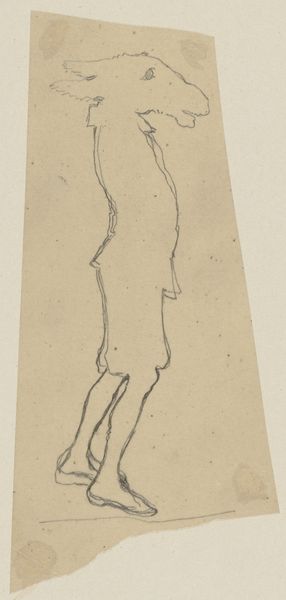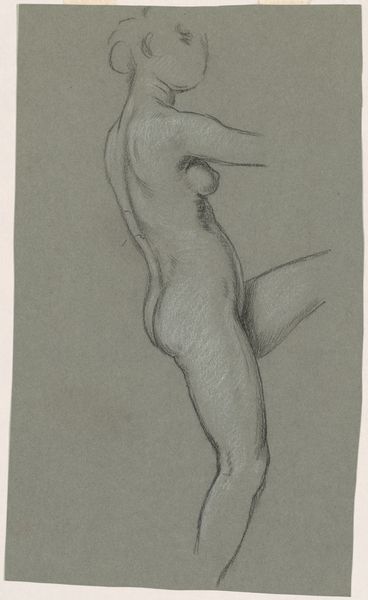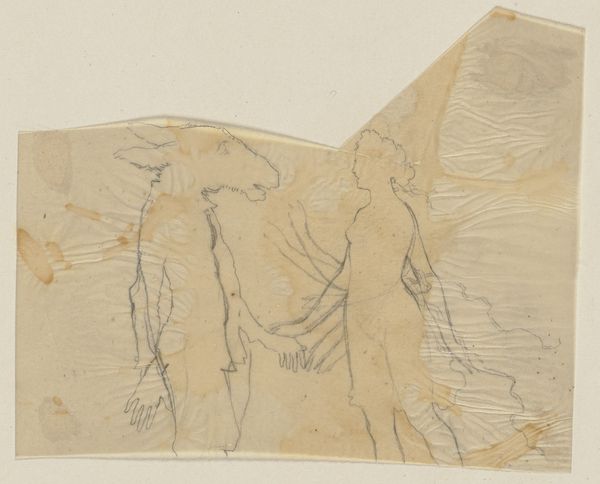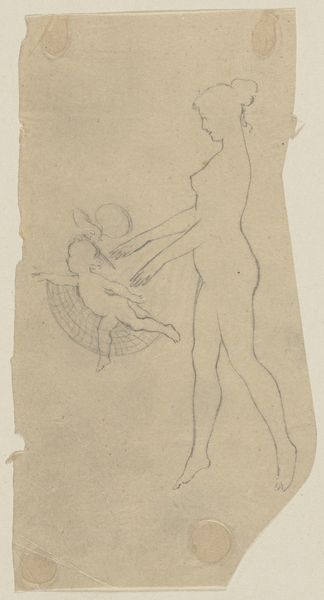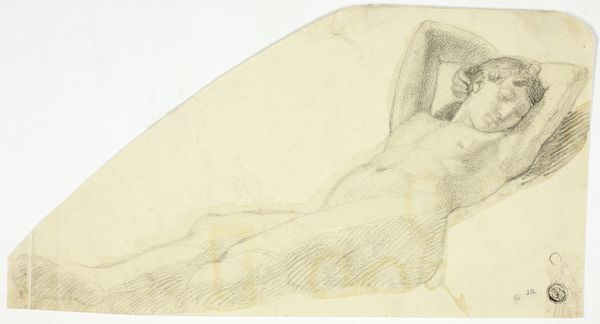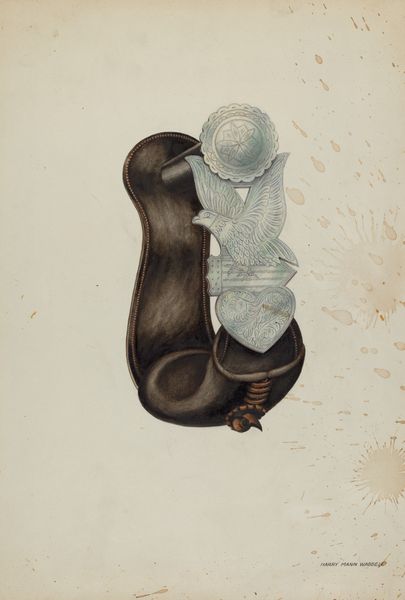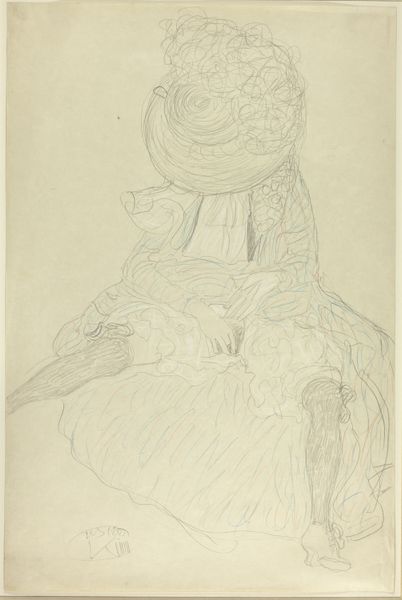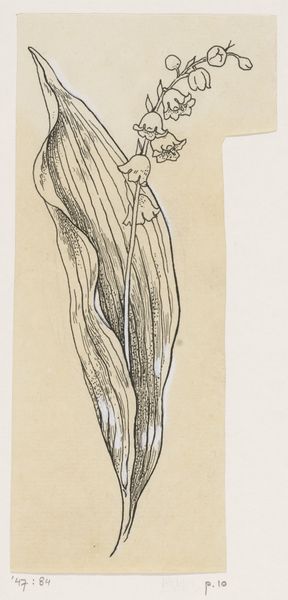
drawing, painting, paper, watercolor, pencil
#
drawing
#
painting
#
impressionism
#
figuration
#
paper
#
watercolor
#
pencil drawing
#
pencil
#
nude
Dimensions: sheet (irregular): 8.1 × 11.75 cm (3 3/16 × 4 5/8 in.)
Copyright: National Gallery of Art: CC0 1.0
Curator: This is "Study for 'Greek Girls Bathing,'" a watercolor and pencil work on paper by Elihu Vedder, dating from around 1872. It has a wonderfully soft, dreamlike quality. Editor: Yes, dreamlike is apt. It looks almost unfinished, like a ghost image lingering on the page. The minimal rendering adds to that ethereal mood. Curator: Vedder, although American, spent a significant part of his career in Italy. He was fascinated by classical themes, mythology, and spiritualism, often intertwining them in his art. Editor: Given Vedder’s historical context and artistic milieu, it is hard not to examine this "study" through the lenses of power dynamics, and particularly the male gaze of the era that romanticized and objectified female subjects from exotic locations, however that comes secondary to the production process. The paper is crucial. What kind was it, and how available was this kind of supply in Italy at the time? Curator: Interesting question! The paper seems fairly ordinary, not particularly high-end. More relevant, perhaps, is the way he’s layered the watercolor washes over the pencil sketch, building form and shadow. Vedder was very interested in the craft, and he liked to play around with media like painting and drawings. Editor: It strikes me that while ostensibly portraying a scene of classical leisure, it’s also about the materiality of art production in its time and place. How were nudes like these consumed by the market? Were studies typically sold on their own or did they circulate amongst workshops and male clubs? Curator: Such close observation makes us consider the work and how this process may relate to issues surrounding race and gender. Vedder's images also helped construct fantasies. I suppose it depends. His finished academic paintings catered to elite tastes, while sketches might circulate within artist circles or be sold to collectors interested in process. Editor: It’s easy to fall into simple interpretations, which could risk stripping away all nuance, but with all these historical complexities, considering his influences in relation to form and presentation is imperative when trying to appreciate works like these, so considering the work through this new and more holistic vision creates additional lenses for better art appreciation. Curator: A good point, that art, as process, creates as much cultural discourse as what's depicted on the page. Editor: Absolutely, something to remember when experiencing the art world in general.
Comments
No comments
Be the first to comment and join the conversation on the ultimate creative platform.
